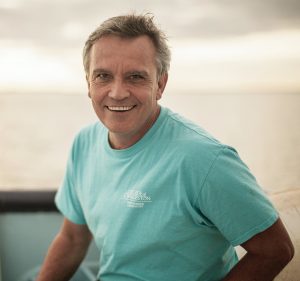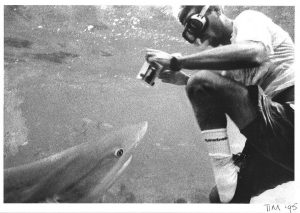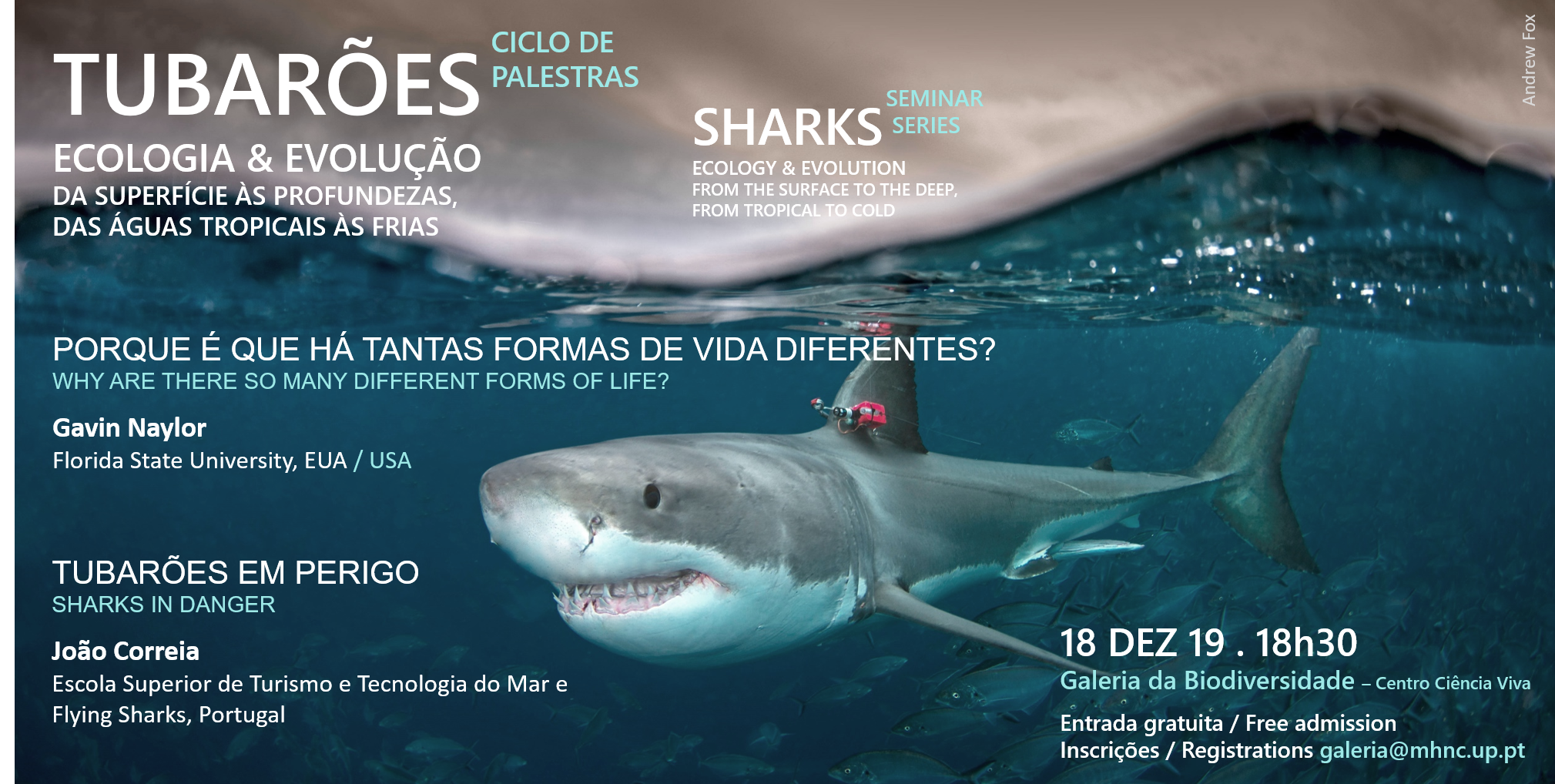PORQUE É QUE HÁ TANTAS FORMAS DE VIDA DIFERENTES?
WHY ARE THERE SO MANY DIFFERENT FORMS OF LIFE?
Gavin Naylor, Florida State University | 18 Dez 2019 – 18h30 | Galeria da Biodiversidade – Centro Ciência Viva
A ideia de Darwin de que a diversidade da vida surgiu através de modificações transmitidas entre gerações exigia duas condições: (1) uma forma de criar traços hereditários e (2) uma maneira de selecionar entre os traços assim criados. A sua teoria da Seleção Natural deu resposta a esta segunda condição. Porém, Darwin nunca foi capaz de explicar como surgiram novas caraterísticas hereditárias. Netse momento, ainda não dispomos de uma teoria geral para explicar a criação de novos traços herdáveis. Nesta sessão será apresentada uma visão que preconiza que até ao momento a investigação se tem focado demasiadamente na importância da seleção natural para explicar a diversidade da vida – e não o suficiente nas propriedades intrínsecas dos próprios sistemas vivos. Estas questões serão exploradas com base em exemplos associados à biodiversidade dos tubarões e raias existentes em todo o mundo.
Darwin’s idea that the diversity of life arose by descent with modification required two elements: (1) a means of generating heritable traits, and (2) a means to select among the traits so generated. His theory of Natural Selection accounted for the second component. But he was never able to explain how novel heritable traits arose in the first place. We still do not have a general theory to account for the generation of novel heritable traits. In this session, the case will be made that there has been too much emphasis on the importance of natural selection to explain the diversity of life – and not enough on the intrinsic properties of the living systems themselves. These questions will be explored using examples drawing from the biodiversity of the world’s sharks and rays.
Esta palestra será ministrada em inglês / This lecture will be led in English
SOBRE O ORADOR / ABOUT THE SPEAKER

Formado em zoologia pela Durham University, UK, e com um doutoramento em genética pela University of Maryland, EUA, Gavin Naylor é, desde 2017 o Diretor do Programa para a Conservação de Tubarões da Florida State University, EUA. Desde 1997 tem vindo a lecionar temas relacionados com biologia, bioquímica, ciências da computação, zoologia e genética. Os seus interesses de investigação focam-se, sobretudo, na biodiversidade e história evolutiva de tubarões e raias.
With a degree in zoology from Durham University, UK, and a doctorate in genetics from the University of Maryland, USA, Gavin Naylor has been the Director of the Florida Program for Shark Research at Florida State University, USA, since 2017. Since 1997, Gavin has been teaching subjects related to biology, biochemistry, computer science, zoology and genetics. His research interests focus mainly on the biodiversity and evolutionary history of sharks, skates and rays.
TUBARÕES EM PERIGO
SHARKS IN DANGER
João Correia, Escola Superior de Turismo e Tecnologia do Mar e Flying Sharks | 18 Dez 2019 – 19h00 | Galeria da Biodiversidade – Centro Ciência Viva
Os elasmobrânquios (nome técnico para tubarões e raias), navegam nos mares há mais de 400 milhões de anos, tornando-os seres incomparavelmente bem adaptados a este ambiente, que dominam. A apresentação “Sharks in Danger :: Tubarões em Risco”, cobre aspectos gerais sobre a incrível biologia e tremenda diversidade destes animais, aproveitando para desconstruir alguns dos mitos mais terríveis que os afligem. Muitos membros do público ficarão surpreendidos ao constatarem que, afinal, a costa portuguese é riquíssima em variadas espécies de tubarões e raias, sendo este apenas um dos vários aspetos abordados antes da conclusão, que foca a pesca desenfreada a que têm sido sujeitos nos últimos anos, estimando-se que 100 milhões são capturados anualmente, colocando estes seres à beira da extinção. São cobertos ainda aspectos sobre formas alternativas, lucrativas e ambientalmente positivas de explorar estes animais que, no topo das cadeias alimentares onde estão inseridos, são peças-chave no vasto ambiente marinho.
The elasmobranchs (technical name for sharks and rays) have been navigating the seas for over 400 million years, making them incomparably well adapted to this environment, in which they rule. The “Sharks in Danger :: Sharks at Risk” presentation covers general aspects of the amazing biology and tremendous diversity of these animals, and deconstructs some of the most terrifying myths that impinge on them. Many people in the audience will be surprised to find that, after all, the Portuguese coast is extremely rich in various species of sharks and rays. This is just one of several aspects addressed before the conclusion, which focuses on the unbridled fishing these animals have been subjected to in recent years. It is estimated that 100 million are caught annually, putting them on the verge of extinction. Other aspects will also be discussed, as for instance alternative, profitable and environmentally positive ways to exploit these animals, which, by being at the top of the food chains in which they operate, are key players in the vast marine environment.
Esta palestra será ministrada em português / This lecture will be led in Portuguese
SOBRE O ORADOR / ABOUT THE SPEAKER

João Correia apresenta um percurso tão notável como a sua ambição e espírito empreendedor. Natural do Cartaxo, desde cedo desenvolveu um amor especial pelo mar, sobretudo por tubarões. Começou a sua carreira no jardim zoológico de Lisboa, onde foi responsável por dois tubarões, e depois foi investigador com tubarões de profundidade no (antigo) Instituto Português de Investigação Marítima. Em seguida, tornou-se responsável pela aquisição de todos os animais do Oceanário de Lisboa, incluindo a sua captura, durante a fase de pré-abertura e oito anos seguintes. Atualmente, para além de professor de ensino superior na Escola Superior de Turismo e Tecnologia do Mar, é fundador e gerente da empresa Flying Sharks, que se dedica à captura e transporte de animais marinhos vivos, sendo uma das únicas neste sector a nível mundial. O seu currículo conta ainda com várias dezenas de publicações científicas, mais de 100 palestras sobre tubarões e/ou motivacionais, uma trilogia de livros (em inglês) que retratam o seu percurso, “Sex, Sharks and Rock & Roll” e o mais recente “Tubarões Voadores” (em português), que chegou rapidamente ao primeiro lugar na categoria “não ficção” da FNAC aquando do seu lançamento.
João Correia’s path is as remarkable as his ambition and entrepreneurial spirit. A native of Cartaxo, João developed a special love for the sea, and especially for sharks, from an early age. He began his career at the Lisbon Zoo, where he was responsible for two sharks, and then became a deep-shark researcher at the (old) Portuguese Institute for Maritime Research. Afterwards, João became responsible for the acquisition of all animals from the Lisbon Oceanarium, including their capture, during the pre-opening phase and for the next eight years. Currently, in addition to being a professor at the School of Turism and Maritime Technology, he is the founder and manager of Flying Sharks, a company dedicated to capturing and transporting live marine animals, and one of the few in this sector worldwide. João’s curriculum also features several dozen scientific publications, over 100 shark and/or motivational lectures, a trilogy of books depicting his career, “Sex, Sharks and Rock & Roll” and the latest one – “Flying Sharks”, which quickly came to number one in FNAC’s “non-fiction” category upon its release.
Mais informações / More information
A entrada é gratuita, mediante inscrição prévia através de galeria@mhnc.up.pt / Admission is free, but subject to registration: galeria@mhnc.up.pt
![]()


